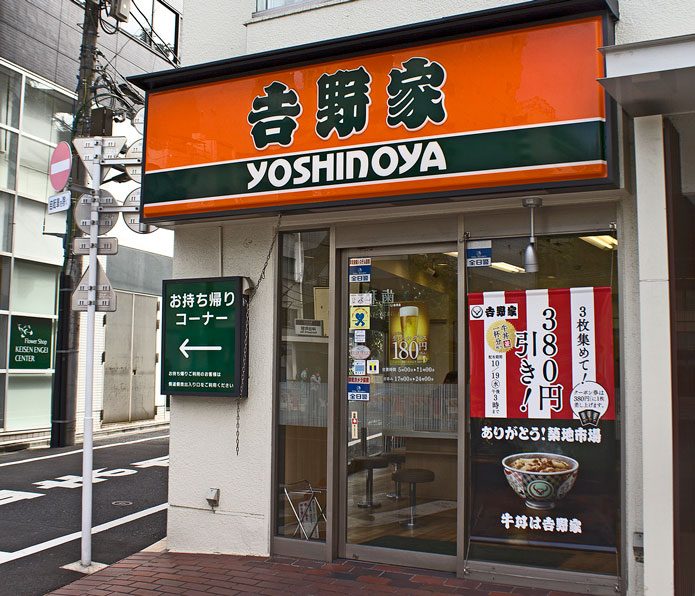
The food and beverage industry has been struggling for business. Nikkei Business (19 September) noted that up to two or three years ago, restaurants enjoyed a brief “expensive boom”, in which the expenditure per customer exceeded that of the previous year. Prices for meat products rose in 2013, but as the Japan Foodservice Association noted: “Although prices were higher, there was an atmosphere in which customers accepted it”.
In 2014, beef bowl purveyor Yoshinoya raised its prices on the basic item in two increments, from ¥280 to ¥380. Many businesses timed their price increases to coincide with the consumption tax rising from 5% to 8% in April 2014.
A spokesperson for Nihon KFC Holdings said he was of the impression that the rise of thrift-conscious customers was a response to chains issuing redeemable points to Ponta cardholders with each purchase. “Products with added value such as spicy chicken are selling well. But from the start of this year, we have noticed a trend that they’ve stopped purchasing additional items on top of ordering regular items”.
Sensing the downswing, more firms have been introducing lower priced items to attract customers. For example, in March 2015 Ringer Hut undercut its already economical Nagasaki champon noodles (¥540) with the ¥40 cheaper mazekaramen, which has sold twice the anticipated volume and been particularly popular with people in their teens and twenties. The firm’s president says he plans to continue offering items for ¥500, the so-called one-coin threshold.
Tadao Kikuchi, chairman and chief executive of Royal Holdings, told Nikkei Business he thinks that, during 2015, a change occurred in consumption at restaurants.
Following the adoption, by the government of Prime Minister Shinzo Abe, of economic policies known as Abenomics, there was an initial period of optimism as members of the post-war baby boom generation, who had received their retirement pensions, spent freely for a brief time. But more recently Kikuchi has noticed a gap between consumer attitudes and restaurant operators that focused on raising the outlay per customer.
And while food service businesses may be facing a labour shortage, they nonetheless want to avoid being labelled a “burakku kigyo”—a “black business”, or one that exploits workers.
“Even though the yen has appreciated in value [in recent years], outlays for foodstuffs and other materials have increased”, Kikuchi said, adding that, “While we need to hold down personnel costs, it’s become difficult to secure workers. So while it will be difficult to see another drop in prices as was the case before, due to deflation, there will be a need to somehow deal with this, by such means as through development and incorporation of innovative technologies”.
However, it was not all bad news. Kikuchi said he expects segments for seniors and foreign inbound travellers to continue growing, “We have to calmly keep close watch on the factors that generate consumption trends”, he said.